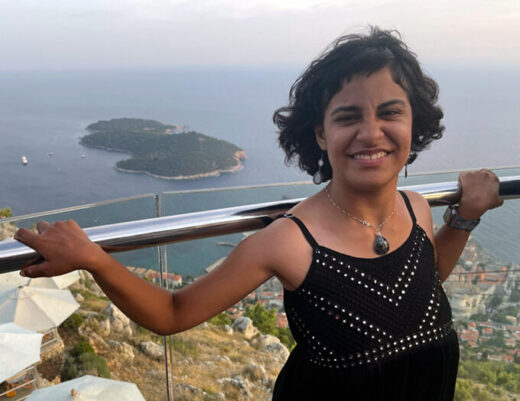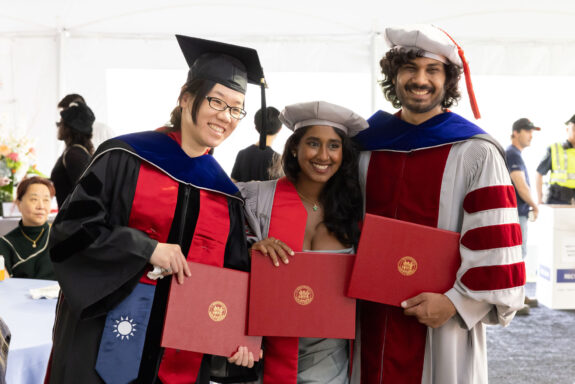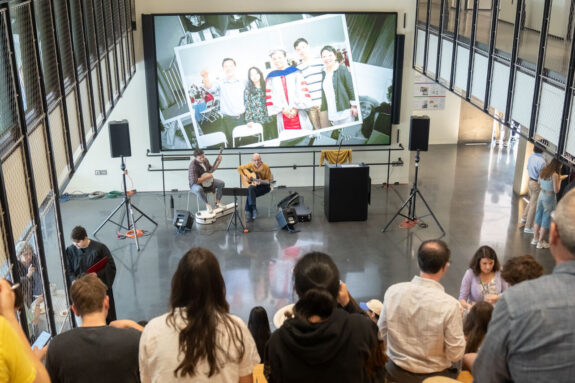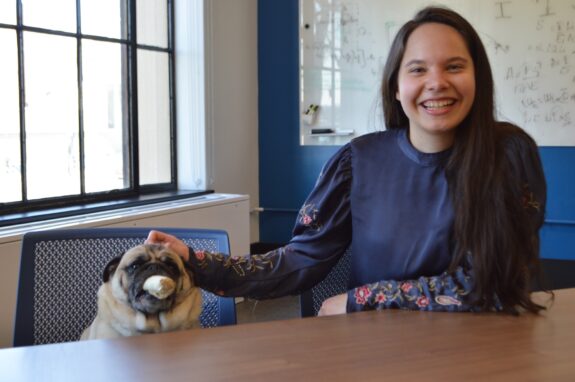Meet the EAPS Majors: Class of 2025
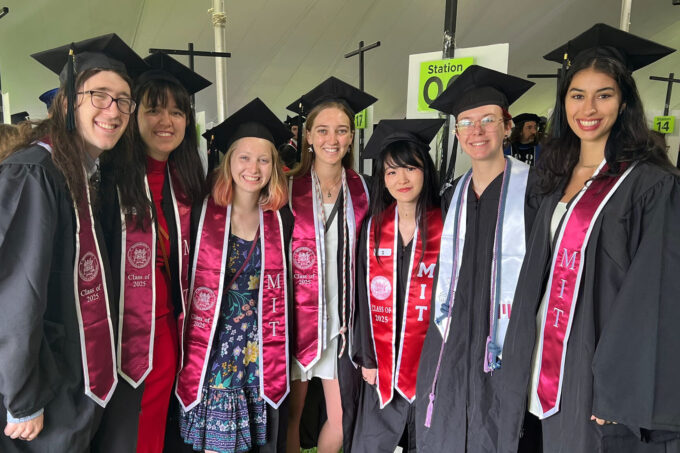
Congratulations to the EAPS Class of 2025, pictured here getting ready to enter the May 30th undergraduate degree presentation ceremony on Killian Court. Photo credit: Alana Snelson/EAPS
Each year, Course 12 seniors present their thesis research to the department — a capstone on the way to completing their bachelor of science degree in Earth, Atmospheric and Planetary Sciences (EAPS). This year we had a class of ten students graduating across all four Course 12 concentrations (Earth Science; Climate, Atmospheres, and Oceans; Planetary Science and Astronomy; and Environmental Science), as well as three students from Course 1-12, the new joint major in Climate System Science and Engineering shared between EAPS and the Department of Civil and Environmental Engineering.
A few of our newly-minted grads sat down to talk about their time in EAPS, their research, and advice for incoming students interested in the geosciences.
Be sure to also check out our photo gallery from the commencement week festivities!
Lucy Brock
Modeling Mesoscale Eddies: the Effects of Resolution on Ocean Turbulence
Advisor: Raffaele Ferrari
Summary of Research
My thesis investigated the ability of numerical ocean models to capture mesoscale eddy dynamics. Using the Oceananigans model, I performed simulations at progressively finer resolutions to determine the minimum resolution needed to accurately represent ocean eddies. Model performance was assessed using metrics such as kinetic energy, temperature, vorticity, and buoyancy. The results show that while coarse models capture large-scale flow, key mesoscale features emerge at higher resolution (past 1/4°), and the 1/8° resolution is sufficient for eddy-resolving in many regimes. These findings help identify the threshold at which the ocean model begins to faithfully represent turbulence, which is crucial for improving climate predictions and understanding energy transfer in the global ocean.
Next Steps?
Next year I will be pursuing a PhD in Oceanography at the University of Washington. I’m very excited to work with Dr. Shima Abadi’s group using acoustics to study climate change driven impacts to marine mammals.
What was your favorite EAPS class and why?
I really loved Weather and Climate Lab—it was so cool performing real experiments that directly related to the atmosphere and ocean dynamics we were learning. And getting to model Kelvin-Hemholtz waves as my final project was really amazing!
What piece of wisdom can you share with incoming students?
Don’t worry if you’re not sure what you want to do right away! Take classes that sound interesting, explore as much as you can, and enjoy every minute of your MIT experience.
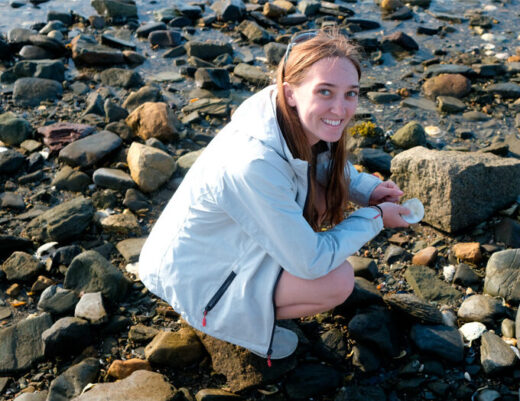
Rina Cao
Bridging Simple Models and Observations of the Flexure Zone around Antarctica
Advisor: Brent Minchew
Summary of Research
My thesis modelled the flexure zone of Antarctica using a simple linear-elastic beam-bending model to see if we can estimate ice thickness. The flexure zone is the region between the mechanically grounded ice shelf and the free floating ice, which is very important for estimating ice melt rate and global sea level rise.
Next Steps?
I will be taking a gap year to focus on applying to graduate programs!
What was your favorite EAPS class and why?
I took a lot of interesting classes, and was fond of the ocean and climate classes here in the EAPS department. 12.373, the field oceanography class, was particularly fun due to the hands-on learning. I’d never really worked in a lab, so it was a new experience for me!
What piece of wisdom can you share with incoming students?
Make sure you eat and sleep well, and never be afraid to reach out to people!
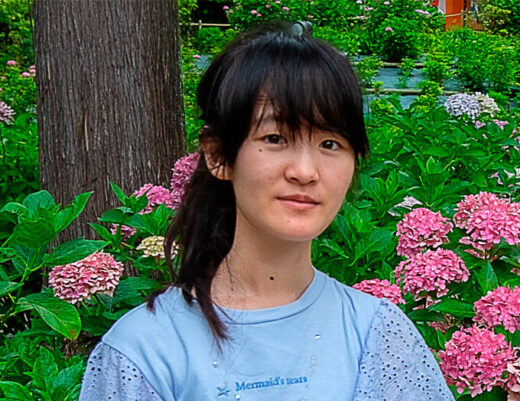
Andy Fong
Investigation of Ex-Situ Carbon Mineralization Fundamentals and Scalability in Wet Supercritical Carbon Dioxide
Advisor: Shuhei Ono
Summary of Research
My research entails better understanding carbon mineralization, the conversion of common magnesium and calcium-rich silicate minerals such as olivine and antigorite into carbonate minerals, effectively capturing carbon dioxide and storing it in a solid form. For my thesis, I focused on the ex-situ carbon mineralization of olivine, where olivine is transported and reacted under high pressure, high temperature “wet” (water-saturated) supercritical carbon dioxide. These conditions offer special advantages and reactivities compared to when the reaction occurs in water that is saturated with carbon dioxide. We find that we can accurately model the temperature and grain size dependence of the carbon mineralization process, and we are able to theoretically scale the process up to be economically and logistically viable.
Next Steps?
I will be attending Stanford University, doing a PhD in chemical engineering studying either complex fluids or chemical catalysis. After that, who knows… the unknown is an exciting place!
What was your favorite EAPS class and why?
I really enjoyed Professor Perron’s geomorphology class (12.163) because it taught me how to be more open-minded in my approach to problem-solving by teaching various ways to think. From going out to the field to collect data to numerical techniques to theory-building, the class gave me exposure to all sorts of science tools. Even though I don’t study the evolution of rivers, landscapes, etc., the skills I get from thinking about these situations helps me think about my own research more effectively.
What piece of wisdom can you share with incoming students?
Take classes that you enjoy and want to learn from! I think that is how you succeed at MIT. Yes, there will be classes you need to take to graduate that you don’t necessarily enjoy, but aim for a degree that makes you excited and enjoy learning!
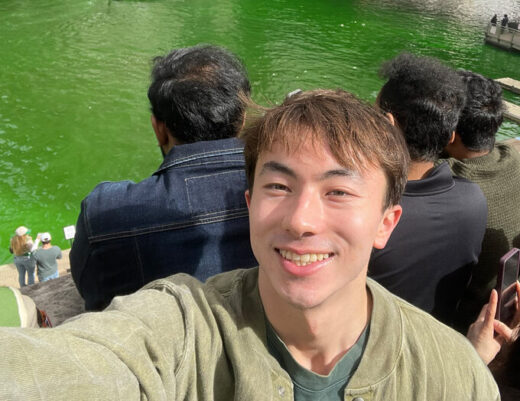
Markey Freudenburg-Puricelli
Triple oxygen isotope measurements in chert: insights into the Snowball Earth glaciations
Advisor: Kristin Bergmann
Summary of Research
Snowball Earth events represent a critical component of the history of the planet, particularly for the trajectory of life, atmospheric oxygen, and planetary habitability. To better understand the relationship between the cryosphere and hydrosphere from this time, we studied silica precipitates within a carbonate immediately underlying a Cryogenian diamictite. Using triple oxygen isotope measurements, clumped isotope palaeothermometry, uranium-lead geochronology, SEM/EDS and XRD analyses, we characterized the host rock and generated possible scenarios for the geochemistry of the precipitating fluid(s) responsible for these silica cements. We concluded that these cherts precipitated either from syn-glacial, sub-ice meltwaters or deglacial fluids from the end of the Marinoan glaciation, demonstrating the utility of chemical precipitates as a record of ancient sub-ice conditions.
Next Steps?
This fall, I am beginning a one-year master’s program in Environmental Policy at the University of Cambridge as a Gates Cambridge Scholar. I am excited to learn the political and economic context I will need to bring Earth science out of labs and into the real world.
What was your favorite EAPS class and why?
My favorite EAPS class was 12.001! This was the first geology class I ever took, and it totally got me hooked.
What piece of wisdom can you share with incoming students?
Take advantage of MISTI! My favorite part of being an MIT student has been all the travel I’ve gotten to do through the international studies program. Learning a new language and spending my summers abroad has made me a better geologist and a better human and I wish everyone knew to make the most of opportunities off-campus 😊
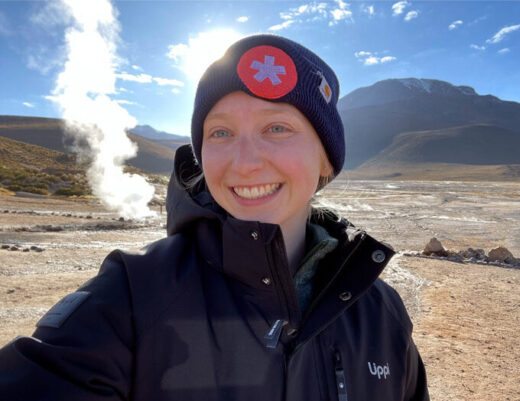
Ryan Gray
Lateral Transfer of DNA in Protocell-like Synthetic Cells
Advisor: Tanja Bosak
Summary of Research
My thesis explores how simple, cell-like structures can exchange material, including DNA, with the environment and between each other, which may have been an important process in the early evolution of life. I created synthetic cells made of lipid membranes and mixtures capable of protein expression and used electrical pulses (electroporation) to facilitate uptake of DNA from the environment and sharing of DNA between cells. By testing different conditions and measuring fluorescence signals, I was able to show when and how DNA enters these synthetic cells. This research illustrates one way in which the earliest forms of life might have exchanged genetic information or without modern biological machinery.
Next Steps?
For research, my system is not perfectly optimized. I intend to reproduce many of my results as cleanly as possible, in addition to characterizing some changes in my synthetic cell mixtures that I did not foresee.
For me, after graduation I’ll be attending Yale as a PhD student in Synthetic Biology.
What was your favorite EAPS class and why?
12.115: Field Geology was the most raw and immersive experience of my undergraduate education. In my junior year, we spent two weeks near Nevada’s Valley of Fire, arriving after an hour of jarring off-road travel in a weary Jeep through stream beds and limestone valleys. We made camp in a rugged desert where stars glittered overhead and we once stumbled upon the remains of a mountain lion’s meal. Each day, we rose early and hiked for kilometers across harsh terrain, putting our geological training into practice. It was physically demanding, intellectually rewarding, and profoundly memorable.
What piece of wisdom can you share with incoming students?
Do your best and have fun. EAPS won’t betray you or let you down.
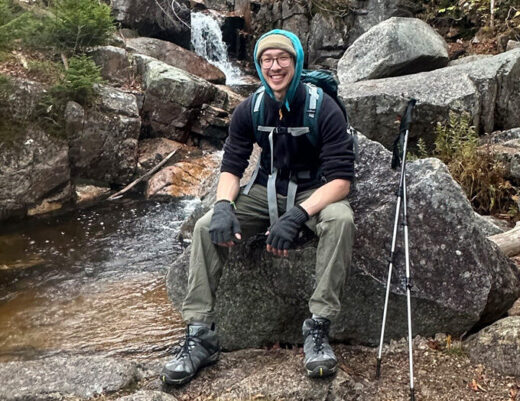
Anika Nath
Modeling Non-Rotational Ocean Circulation and Heat Distribution in Icy Moons
Advisor: Christopher Hill
Summary of Research
My thesis investigates how tidal heating influences ocean circulation in icy moons like Europa and Enceladus. I developed a non-rotational numerical model to simulate vertical heat transfer and assess the effects of boundary conditions on temperature distribution. The goal was to understand how these oceans remain liquid despite their distance from the Sun, offering insights into their potential habitability. I tested model stability, validated results against analytical solutions, and incorporated non-linear temperature profiles to better reflect realistic subsurface conditions. A key finding is that differences in thermal conductivity between ice and liquid water significantly impact the resulting heat flux and equilibrium temperature gradient.
Next steps?
I’m continuing at MIT in the Fifth-Year Master’s in EAPS program, where I’ll be working with Prof. Julien de Wit on exoplanet research, focusing primarily on data analysis and atmospheric characterization.
What was your favorite EAPS class and why?
My favorite class was 12.400: Our Space Odyssey. It gave me a broad overview of planetary science topics while also encouraging me to reflect on our journey in exploring space. It made me excited to be part of a field with so much potential, not just for scientific discovery but for its impact on humanity as a whole. It was great to hear from a variety of speakers from different backgrounds on topics related to space and to engage in deep discussions with my peers.
What piece of wisdom can you share with incoming students?
Take advantage of being in a small, tight knit department to build real connections with your peers, TAs, and professors. It makes the experience more meaningful and helps you learn about opportunities in your field that you might not come across otherwise. That’s how I found out about my internship at Los Alamos National Laboratory, and I’ll be interning there again this summer!
